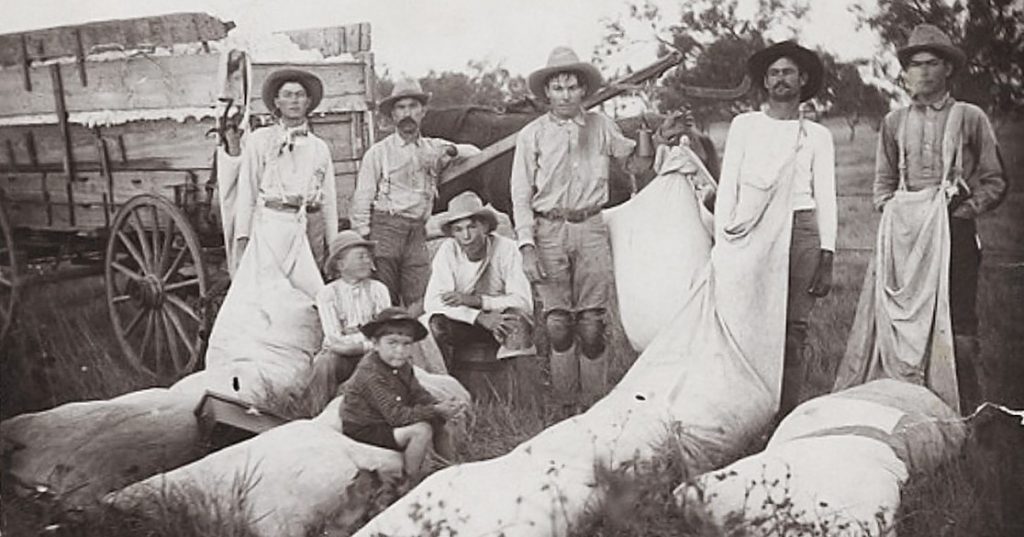
Image from an 1895 Cotton Farm in Eden, Texas (not the Callcotts)
George Hardy Callcott immigrated to Texas in 1885. His biography, “Mr. George: An English Immigrant to Texas”, tells us about the family’s beginnings in England, their journey to America, and their lives as successful cotton farmers at the turn of the 20th century.
The Tacquard family came from the Alsace region of France to Texas in the mid-1840s. That region of France is on the current border with Germany and the DNA ethnicity percentages often group people from the Alsace region as German or central European. Jacques died of Yellow Fever soon after his arrival and was one of the first people buried at the new St. Mary’s Catholic Church in Galveston. His children went on to become successful ranchers and farmers. Jacques Hippolyte Tacquard became the largest landowner in Hitchcock. He drilled the first deep artesian well in the area and supplied drinking water to Galveston for many years.
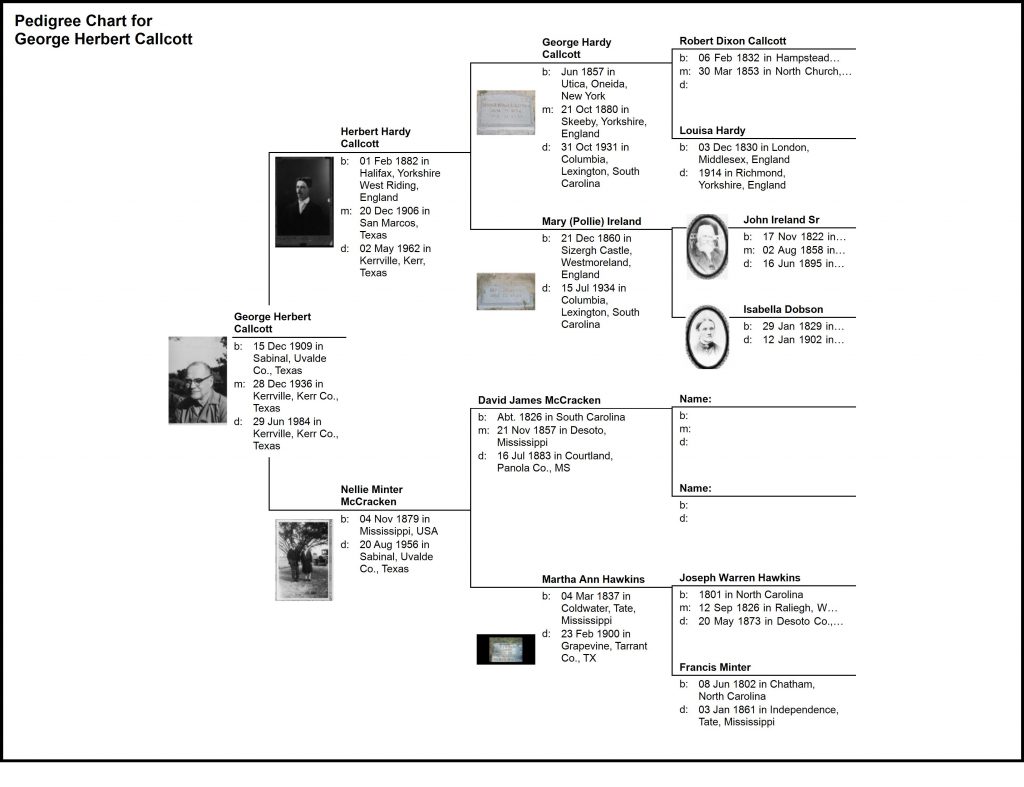
George Hardy Callcott and Mary Ireland
The Callcott Family in England – The Shropshire Callcotts
The earliest assured direct line begins with the marriage of Thomas Calcott to Mary Jones at Melverly fifteen miles northwest of Shrewsbury in 1765.
Their older son Thomas was born in 1766, married Diana Byston at Alberbury, and died in 1837. The second son Robert (ancestor) was born 1768 at Melverly, married a woman named Hannah, and moved to Alderbury.
Jonathan Walter Callcott
Jonathan is Robert’s son and the grandfather of the immigrant George Callcott. He was listed as a Draper, or cloth merchant, in his children’s marriage licenses. His father-in-law, Thomas Dixon, and Thomas’ father, Robert Dixon, were both drapers.
We know that he was inclined to travel because all of his children were born in different places. He disappeared from the records after 1834.
His children must have grown up with some affluence, probably in the Thomas Dixon home. Clarissa lists herself as gentry “Lady” when she married a Baptist preacher in 1857, even though her second marriage was to a laborer twenty years her junior.
Note from researcher – George Hardy Callcott thought that Jonathan Walter was Jonathan Wall Callcott (The famous London Musician) and may have confused the family.
Robert Dixon Callcott
Robert’s mother died when he was two years old, and he was baptized at Wendover; so he was probably raised by his uncle Thomas Dixon a man of some means who employed servants to help with the children. Robert married the governess in the Dixon house, Louisa Hardy, in the Parish of Northchurch on March 30, 1853 in spite of the vigorous objections of the Callcott family. Disinherited for this marriage beneath his class, Robert took his bride to London to live. A year and a half later their daughter Caroline was born.
Robert and family emigrated to New York, a year and a half later. He was a waiter in the Buggs Hotel, in the frontier town of Utica, New York, 1855-1857. George, the immigrant, was born in New York at this time. Robert lost his job in 1858 and the family returned to England. In 1861 the census shows his wife and children living with his wife’s father, Francis Hardy, at the Pirch Public House, Weston Turvile, Buckinhgamshire. Soon after that Louisa and children moved to the farm of her brother, George Hardy, in Skeeby, Yorkshire where a third child was born in 1864.
Nothing is heard of Robert Dixon after 1864. In 1881 his wife wrote George Hardy Callcott that she has not seen him for many years and does not know whether he is in England or America. Family legend says he died in America, either in a lumbering accident in Canada, or in a brawl in Virginia. This must have been in the 1880s.
The Dixon Family
The Dixon family came into Wendover; Buckinghamshire in the 1780s and remained prominent in the little town for over a hundred years. Robert Dixon was born in 1756, possibly in Salisbury, Wiltshire. In 1783 he married Sarah Atkins in Wendover. He was a lace manufacturer and draper and had a shop on the High Street. Briefly in his career he went to Salisbury where his third child was born, but he soon returned to the town and died March 31, 1843 at age 87. Robert Dixon had nine children.
Thomas Dixon, the youngest was apparently the head of the family, taking over his father’s lace manufactory on High Street in 1842, and later acquiring a farm. He married his wife late in life and had no children of his own, but he was apparently responsible for Clarissa’s family after she died and her husband disappeared.
The Hardy Family
The Hardys were humble people from Yorkshire. Francis Hardy was born in 1807 in Hull on the Yorkshire coast His brother George Hardy, was born in Burton, according to the census, probably Hornses-with-Burton, about 15 miles north, in 1814.
Francis Hardy came as a young man to Weston Turvile, Buckinghamshire and apparently settled along the town reservoir and became a fisherman. His place was variously called a fishing house, The Pirch Public House, and the Golden Perch. There is a picture of the inn, with a bowling green, which he painted. Francis Hardy married a woman named Lucy, who was born in nearby Halton, Buckinghamshire in 1811.
The Hardys apparently had only one daughter, Louisa, who was born at Marleybone, Middlesex, on December 3, 1830. In 1851 , age 21, she was a dressmaker at her parent’s home; then she must have been a governess for Thomas Dixon and his Callcott dependents and in 1853 she married Robert Dixon Callcott in Northchurch, about ten miles away. No members of either family attended the wedding.
Louisa and Robert went to America in 1855, where Robert worked at a hotel in Utica. They returned about 1858, and in 1861 she and her two children, but not her husband, were living with her parents in Weston Turville. About two years later, Louisa and the two children moved to her uncle’s house in Skeeby, Yorkshire. The uncle, George Hardy, was a shoemaker and a sheep farmer, a dour bachelor. Louisa kept house for him, but they were apparently poor, or the relationship was hostile, for by 1870 both children, Caroline (age 15) and George (age 13) were put out to service.
The Dobson – Ireland Families
The Dobsons through the 18th and 19th Centuries were a moderately prominent family in Westmoreland County, adjacent to Scotland on the west coast. The Irelands considered themselves moderately prominent in nearby Cumberland County.

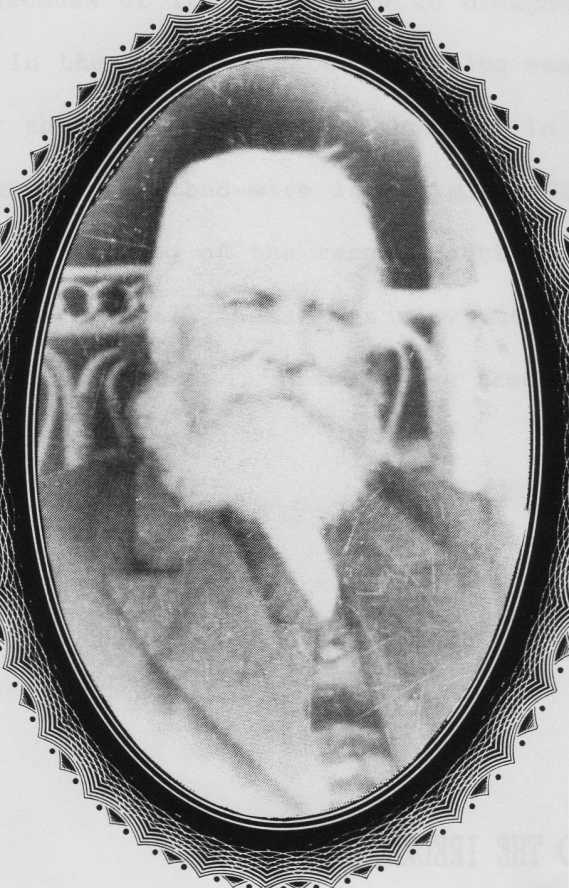
John lreland, born 1822, became manager of Sizergh Castle in Yorkshire, had four children by a first wife, Agnes Clusby, and in 1858 married Isabella Dobson who was living at Park Manor, Haversham, Westmoreland, and they had six more children. In 1871, John and Isabella migrated to Wytheville, Virginia, with three of the first wife’s children and their two youngest daughters. In 1875 they followed the advice of his doctors and moved to the dry climate of central Texas near Luling where he became a farmer and rancher and the first Callcott ancestor in Texas.
John and Isabella left behind two older daughters, Lily and Mary, who lived with relatives on a farm near Skeeby, Yorkshire, England. Mary married George Hardy Callcott in 1880, and Lily married Frederick Wilson in 1884.
George and Mary Callcott inherited 413 Pounds and opened a delicatessen in Halifax, Yorkshire and in 1885 they also left for Texas. The Callcotts and Irelands settled close together and remained close during their farming years in Texas. John Ireland died 1895 in Zorn, Texas and Isabella died 1902 in Gonzales, Texas. They are both buried in the Lockhart City Cemetery on the Northeast side of Lockhart, Texas near US Highway 183.
John Ireland’s Obituary:
John Ireland Died at his residence in Guadeloupe county, near Yorks Creek, Sunday, June 15 at 7 p.m., of heart disease, John Ireland. Aged 74 years and eight months. Mr. Ireland was born near Richmond, Yorkshire, England. Nov. 17th, 1835, and emigrated to America in 1872, settling in Whythville, Virginia, where he resided for three and a half years, when he came to Luling, removing to Guadeloupe county a few years ago. Mr. Ireland was the father of Mrs. John Carter of this city and leaves a wife and children of two of whom are in England. To the stricken wife and children, The Signal extends its sincerest sympathy.
The following account was transcribed from a letter written in the hand of Estelle Vann Callcott:
The Callcott Family lived north of Chiltern Hills 30 Miles East of Oxford in the town of Alyesbury, England. East of town near the Golden Perch Inn lived Francis Hardy, The Grandfather of Mr. George, the immigrant, and Louisa Hardy, George’s Mother. Louisa was a governess for the Callcott family at North Church and married Robert Dixon Callcott.
The Callcott Family can be traced back to a London engineer (a street in Kensington section of London was named after him and was still there in 1964). (Note from researcher- George Hardy Callcott thought that Jonathan Walter was Jonathan Wall Callcott (The famous London Musician) and may have confused the family.)
Robert Dixon Callcott was the grandson of John Walter Callcott and nephew of William Hutchinson. Caroline was born Aug 11, 1855 in London. George Hardy was born June 9, 1857 in Utica New York. Another son Frank was born in 1864. Robert Dixon disappeared – thought to have returned to America and killed in a drinking house in Virginia. Robert Dixon Callcott and his wife went to Utica N.Y.
Louisa was left with 3 children and destitute. She lived with her elder bachelor brother George Hardy in Yorkshire. In Skeeby near Richmond he had a duplex. One side was rented to a tenant and Louisa lived in the other and was a housekeeper for her brother.
George H. (named for his uncle) was allowed to go to local school for part of 3 sessions (as too much education had been the cause of Louisa’s misfortunes). At age 13 he “took service” for local country gentleman. For 9 years he worked his way up to be a footman at Corkridge Hall, near Leeds. He left Richmond, Yorkshire on April 17, 1879 to seek his fortunes in London.
In London he met Mary Ireland at church. She was the daughter of John Ireland who was the manager of large estate in the community, but he had respiratory trouble, so the doctors advised to go to the New World. In 1871 left for Virginia with wife, 3 children from earlier marriage and 2 youngest daughters.
They stayed 3 years in Wytheville (between Roanoke and Bristol) and moved in 1875 to Central Texas (Luling). The two daughters Mary and Lily were left with their aunt and uncle to finish school In England. Mary and George Callcott were married and started their family in England. Their uncle died and they were put to work on farm.
Children of Robert Dixon Callcott
Caroline Anne Callcott, August 11, 1855 – December 8, 1914. She cared for her mother and her uncle, George Hardy, in Skeeby, near Richmond, Yorkshire and died unmarried.
Frank Hardy Callcott: Inherited a small farm of his mother’s bachelor uncle George Hardy and died unmarried.
George Hardy Callcott “The Immigrant”, 1857-1931. George was born in Utica New York, in 1857 just before the outbreak of the Civil War. His family returned to London, then moved to his uncle’s farm in Skeeby, Yorkshire. He completed three partial years of school, worked as a sheep herder, and then went into service as a footman (A servant at a wealthy home) from ages 13-22. “On Thursday April 17, 1879, George, twenty-two years of age, 5’ 8” and a solid 12 stone, 10 pounds (178 pounds) left Richmond, Yorkshire by railroad for London to seek his fortune”.
George found lodgings at A23 Albion Street and took a job as a cigar salesman. He corresponded with Mary weekly, and they brought their letters with them to Texas where they were included in George’s biography. He next tried selling bibles on the street, but his sales career did not flourish.
He then applied for a job at the railroad station at King’s Cross as a porter to handle freight. The work was heavy, and he was required to work 11 hours a day, six days a week. The pay was meager, from fifteen to seventeen shillings per week. He also began teaching a Sunday School class for 13-year-old boys at the railroad man’s chapel. He moved to 6 Bath Place where the rent was only 3 shillings (about 72 cents) per week.
George rose through the ranks in the Great Northern Railroad and was given more responsibility in smaller northern stations where he earned more money and where the work was less physically demanding. He later transferred to Yorkshire in 1880 where he married Mary Ireland, October 21, 1880, East Abbey, Skeeby. Later Thomas Dixon (his grandmother’s brother) left him an inheritance of 413 Pounds Sterling and with that money they opened a delicatessen in Slaidburn, Halifax, England in 1881. Herbert Hardy Callcott was born in 1882 and Ethel in 1884. The shop continued to prosper.
During this time Mary’s parents wrote about the good life in Texas. George and Mary were convinced that their fortunes would be improved so they decided to sell out and move to Texas. They sold their store, packed their belongings and booked passage from Liverpool crossing the Atlantic in the close quarters of ship’s steerage.
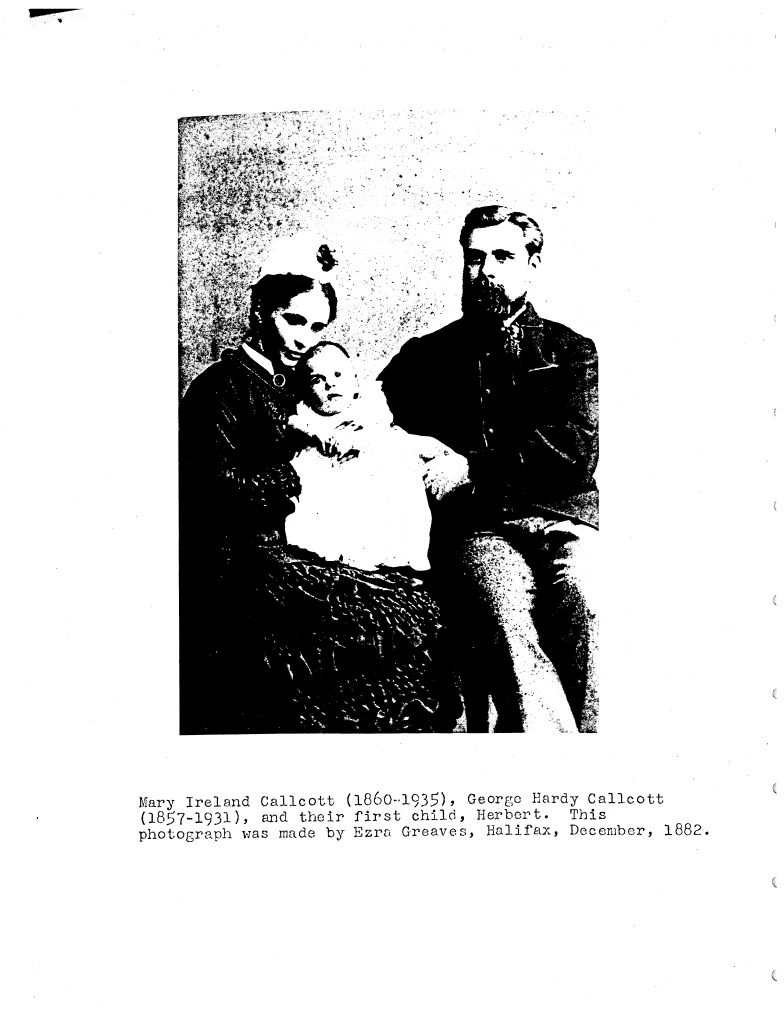
In 1885, at the age of 28, he and his young family arrived in New York April 12th on the ship “City of Richmond” and took the train the next morning to Kyle, Texas, a small town on the Blanco River about 24 miles south of Austin. Mary’s parents and siblings were already established in central Texas having moved there 10 years earlier in 1875. The Irelands met the Calcott’s and helped them get started in farming and ranching. Kyle was directly on the Chisholm Trail, a major path for cattle drives to the Oklahoma and Kansas rail heads of the day.
George and Mary spent two years in Kyle. John Ireland, Mary’s father, went in with the Calcott’s and bought land between San Marcos and Luling, sixteen miles north of Seguin on a piece of land called Rattlesnake Hill. (a few miles south of present-day Zorn, Texas) They built two houses – one for the Irelands and one for the Callcott’s.
George became a successful cotton farmer in the last decade of the 19th century. John Ireland died in 1895 and his wife went to live with their youngest daughter, Mrs. John Carter, in Luling. George brought the remaining Ireland property for $2,210.00 on 1899. They invited a Mexican family to live in the old house to help on the cotton farm.
The year 1900 was good for the Callcott’s. Prices for cotton were high, they had a lot of rain, and the boll weevil had not arrived to destroy the crops. The family built a six-room house facing North on the top of Rattlesnake hill. It included luxuries like wallpaper in the living room and furniture ordered from the Montgomery Ward Catalog.
In 1903 Herbert reached 21 years of age. In honor of his new status George rented him 40 acres of land and presented the new citizen an excellent hunting case watch. George provided seed, provisions, and animals to start the enterprise. Herbert split the profits of the cotton farming with his father.
In 1906, Herbert had made a go of the farm and chose to marry Nellie Minter McCracken who was working in a dry goods store in town. The new family was able to buy farm implements and animals and rented land from Mr. George Rylander.


Floor plan of the new house
As George prospered the family was able to afford luxuries and begin to travel. They were active in the Methodist church and travelled by train to Corpus Christi for Methodist camp meetings. George went to the 1904 World’s Fair in St. Louis. George’s younger sons were able to travel to Seguin and attend high school at the local public school. In 1907 the family saw their first automobile.
In 1908 George and Herbert both bought land that had opened for farming in Sabinal, Texas west of San Antonio and moved both farming operations onto their new land. George and Mary bought 100 acres about five miles 2est of Sabinal and two other parcels with a total of about 500 acres. They bought a five-room house in town. 1913 brought a new milestone when George bought his first car, a Ford Model T.
Economic conditions in Sabinal were not kind to the Callcott’s. Herbert made a living by working his own land, but George was burdened by the cost of labor and only broke even. Herbert and family remained in Sabinal for the rest of his life, but George and Mary sold out and bought land near Corpus Christi with a home in that little city. They had good crops and the inflated prices of World War One brought them financial independence.
In 1929 their son Wilfrid’s wife died leaving him with a three-month-old baby boy. George now 73, and Mary 70, moved to Columbia, South Carolina to help care for the young family. In the words of their biographer “In Columbia it was a joy to see this old Yorkshire couple, with limited education and self-made in rough society, meet a university faculty. With apologies to none, they calmly commanded respect and confidence.”. There in 1931 George died. Mary followed him four years later. Both were buried among their friends in Corpus Christi.”
Mary Callcott Obituary:
“Mrs. Mary Ireland Callcott died early Sunday morning after an illness of many months at the home of her son, Prof. W.H. Callcott, 2717 Wilmot Avenue. (Columbia, South Carolina)
Mrs. Callcott was born at Sizer Castle, Yorkshire, England. December 21, 1860. She was the daughter of John and Isabella Dobson Ireland. In October 1880, she was married to George Hardy Callcott. Five years after their marriage, they left England for Texas, with two small children, going to what was then the end of the Southern Pacific Railroad, and settling near San Marcos. In 1908 they moved to Sabinal, and in 1916 to Corpus Christi. In the fall of 1929, they gave up their home Texas home and joined their son in Columbia. Mrs. Callcott’s husband died two years ago. She is survived by four children; Herbert Hardy Callcott and Mrs. Ethel Callcott Rylander of Texas, Professor Frank Callcott of New York City, and Professor Wilfrid Hardy Callcott of Columbia. Of her ten grandchildren, two are in Columbia.
Mrs. Callcott in the five years she lived in Columbia, made and endeared herself to a wide circle of friends. She exemplified, to a later generation, all virtues of the pioneer Englishwoman, who went to a large extent, mothered America in its infancy. Courageous, resourceful, unafraid of work, responsibility or the perils of the unknown future, she never lost the forward-looking spirit of youth. A quiet and sustaining faith, and an unfailing enjoyment of the gift of life, marked her as a woman of very unusual balance. She was a devoted mother, not only to her own children but to the little grandson for whose namesake she came to South Carolina.
A simple and dignified service was held at her son’s house Sunday afternoon at 5o’clock, conducted by the Rev. W. L. Mulliken of the Washington Street Methodist church. She will be buried beside her husband in Corpus Christi, Texas.
Handwritten Note: The State 7/16/34”
George was active in town politics and the Methodist church. He was well read and a local gentleman-savant. He kept full diaries and letters throughout life and is the subject of a 319-page biography by his son, Wilfrid Hardy Callcott, “Mr. George: An English Immigrant to Texas”. The pdf files below are individually scanned from a manuscript of the book provided to us by The University of South Carolina library where Wilfrid’s papers are archived. These images show annotations and corrections to the finished book, which is no longer available for sale.
George and Mary are buried in the Rose Hill Memorial Park Cemetery in Corpus Christi, Texas
Herbert Hardy Callcott and Nellie Mccracken
Herbert was born to George H. Callcott and Mary Ireland in England and immigrated with them when he was three years old in 1885. The young family settled in central Texas. By 1900 they lived in Guadalupe County. Herbert and Nellie McCracken married in 1906 in San Marcos, Texas. Nellie was born in 1877 in Panola, Mississippi. Her father died when she was 6 years old. She moved to Texas with her mother and settled with other members of her father’s immediate family in Denison, Texas on The Red River near the Oklahoma border. After their marriage Herbert and Nellie relocated to a rural farm near Sabinal, Texas, west of San Antonio, where they raised three children; two daughters and one son, George Herbert Callcott, who was born in Sabinal in 1909.
Nellie passed away in 1956 and Herbert followed in 1962. Living members of the family recall Herbert visiting Kerrville in the late 1950s still speaking with the English accent he acquired growing up in an immigrant household.

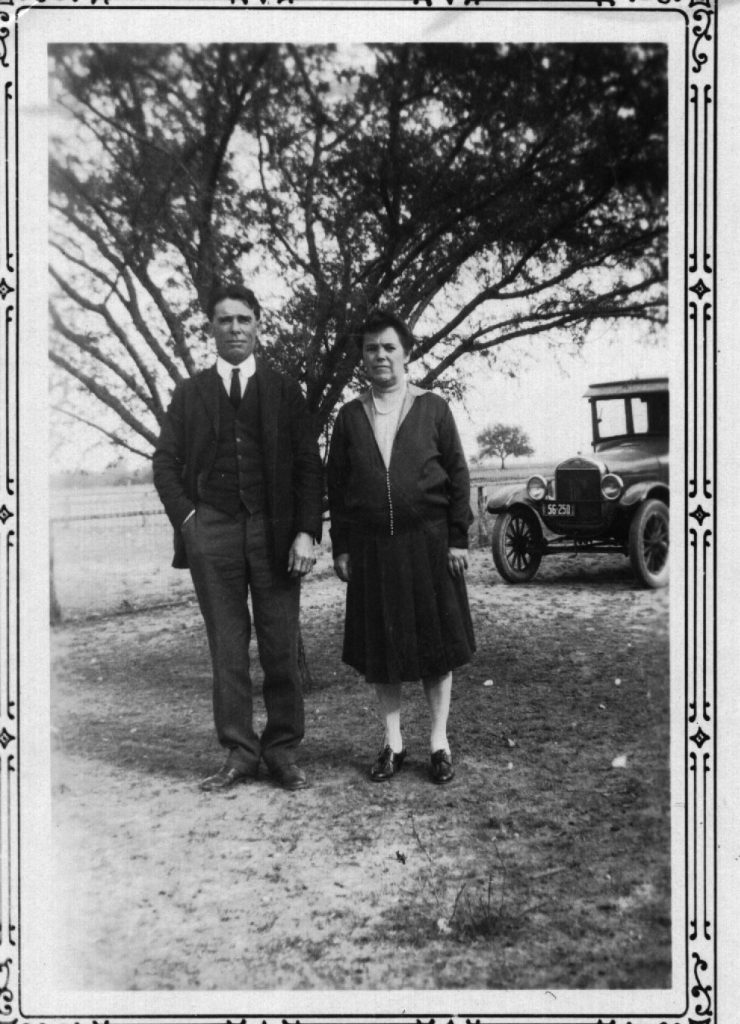
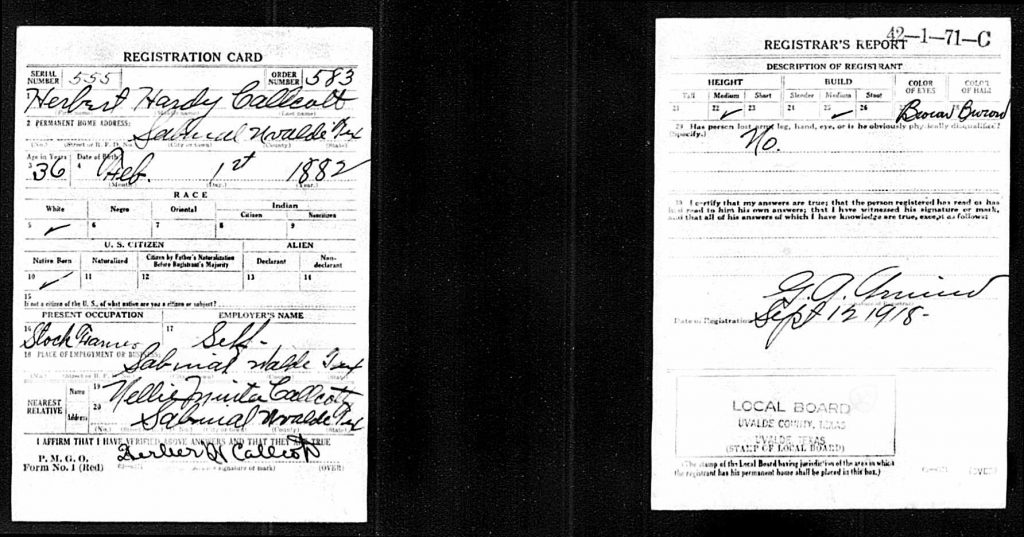
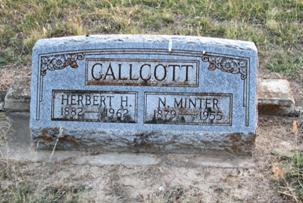
Herbert and Minter are buried in the Sabinal Cemetery, Sabinal, Texas; 2 miles east of town on the north side of Hwy 90.
George Herbert Callcott and Estelle Vann
Estelle Blanche Vann, daughter of William Walter Vann and Agnes Gabrielle Tacquard was born23 Nov 1914 in Galveston, Texas. She died 22 Sep 2003 in Round Rock, Texas. She married George Herbert Callcott, son of Herbert Hardy Callcott and Nellie Minter McCracken on 28 Dec 1936 in Kerrville, Texas. He was born on 15 Dec 1909 in Sabinal, Texas. He died on 29 Jun 1984 in Kerrville, Texas.
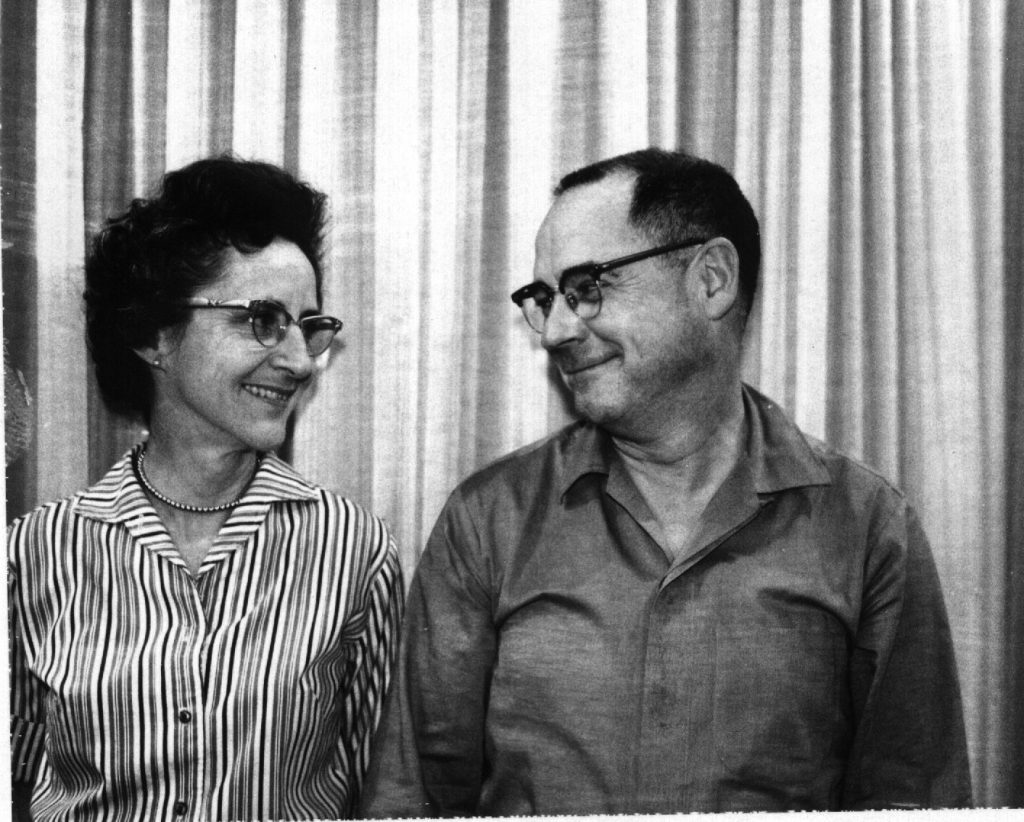
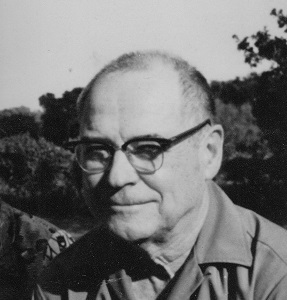
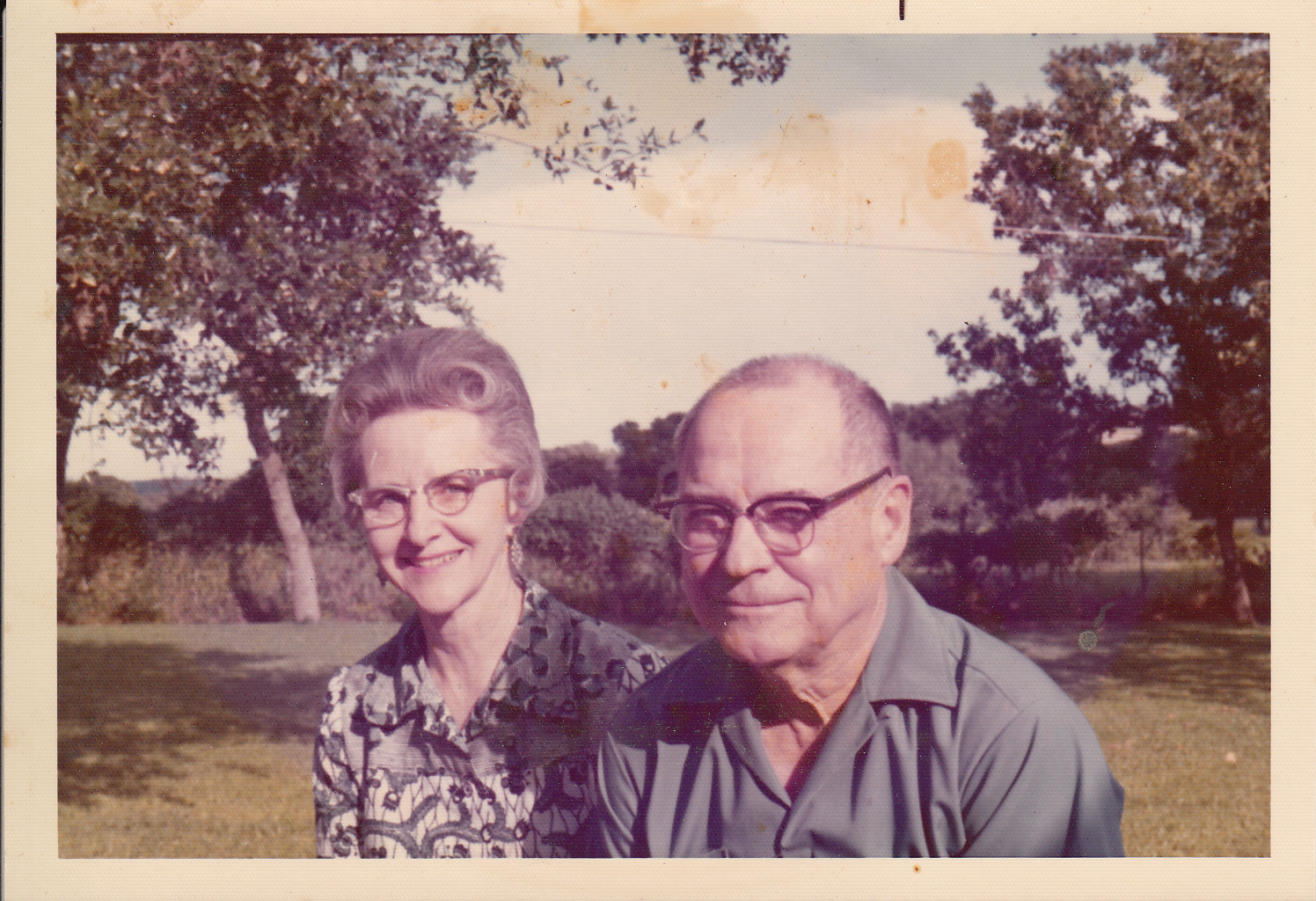
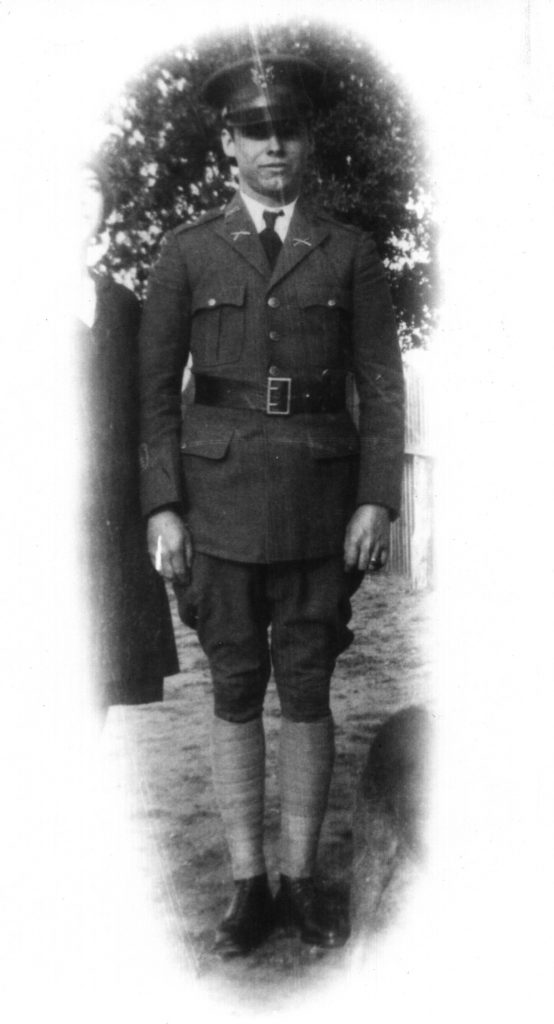
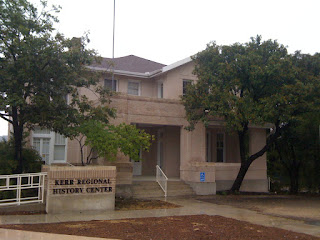
George and Estelle owned this neoclassical house at 425 Water Street in Kerrville. It is now known as the Callcott-Vann-Schreiner house and owned by the city and serves as the Kerr Regional History Center. The History Center is a branch of the Butt-Holdsworth Memorial Library and is home to the Kerrville Genealogical Society.
Architect Atlee Ayres designed the house for Whitfield Scott Schreiner, grandson of Capt. Charles Schreiner. Construction began in 1914. The house was designed with ten rooms, each having four windows, making the rooms light and bright. The back yard is on the Guadalupe River.
In 1927 the Schreiners sold the house and moved to an estate west of town. City manager Sealy Cone then lived here several years before selling the house to W. W. Vann who in turn sold it to his son-in-law George Callcott. Their children were born and raised in this house. The Callcott’s were the last family to reside in the house. They sold the property about 1969 to the H E Butt Foundation which leased it out to non-profits.